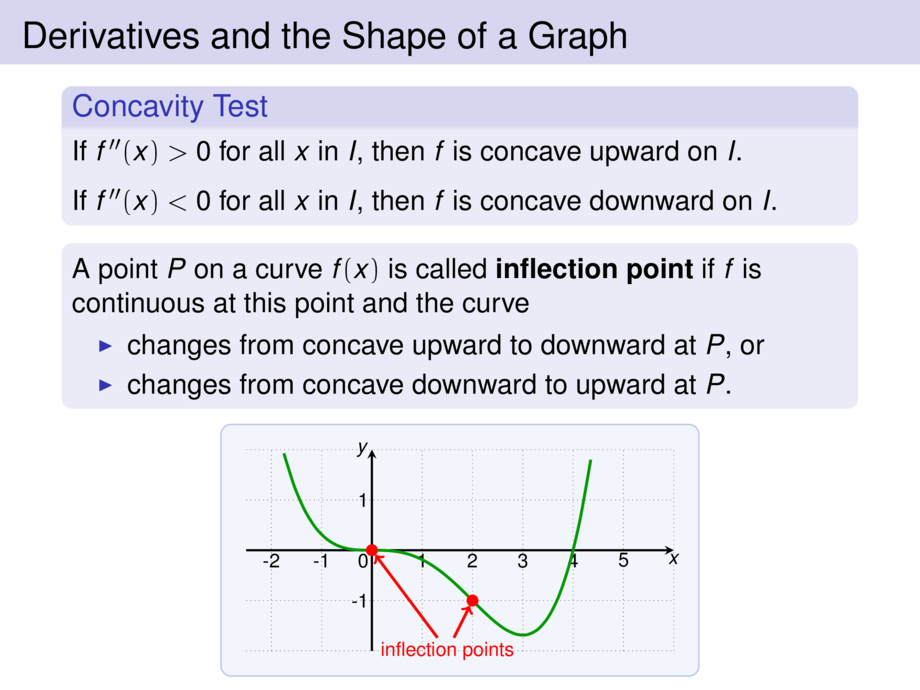



































































































98/158
\begin{frame}
\frametitle{Derivatives and the Shape of a Graph}
\begin{block}{Concavity Test}
If $f''(x) > 0$ for all $x$ in $I$, then $f$ is concave upward on $I$.
\pause\medskip
If $f''(x) < 0$ for all $x$ in $I$, then $f$ is concave downward on $I$.
\end{block}
\pause
\begin{block}{}
A point $P$ on a curve $f(x)$ is called \emph{inflection point}
if $f$ is continuous at this point and the curve
\begin{itemize}
\item changes from concave upward to downward at $P$, or
\item changes from concave downward to upward at $P$.
\end{itemize}
\end{block}
\pause
\begin{center}
\scalebox{.7}{
\begin{tikzpicture}[default,baseline=1cm]
\diagram{-2.5}{6}{-2}{2}{1}
\diagramannotatez
\diagramannotatex{-2,-1,1,2,3,4,5}
\diagramannotatey{-1,1}
\begin{scope}[ultra thick]
\draw[cgreen] plot[smooth,domain=-1.75:4.35,samples=30] function{(x**4 - 4*x**3)/16};
\end{scope}
\mpause[1]{
\begin{scope}[cred,ultra thick]
\node[include=cred] (na) at (0,0) {};
\node[include=cred] (nb) at (2,-16/16) {};
\node (i) at (1.5,-2) {inflection points};
\draw[->] (i) -- (na);
\draw[->] (i) -- (nb);
\end{scope}
}
\end{tikzpicture}
}
\end{center}
\end{frame}

